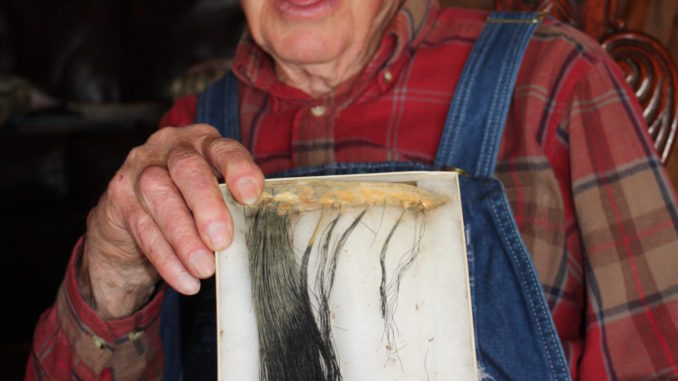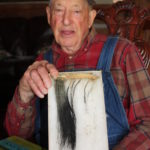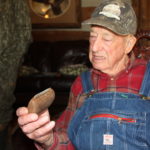
Sticking with basic calls and setting up where you can see a turkey approaching are two tenets Lombard held in the woods.
We sat spellbound as the late Jack Lombard of Mountain Rest talked about the birth of modern turkey hunting in South Carolina. He spoke softly, without pretense. At 86, a few months before he passed away, he had nothing to prove. The competitive ways of youth were long behind him. His eyes had a faraway look as his thoughts went to a life filled with turkey hunting success.
Lombard, who died last September, worked at the Walhalla National Fish Hatchery for 33 years and mentored many novice turkey hunters in his lifetime, and when they followed his instructions, most were successful.
“In the early years, I helped five new hunters learn to hunt turkeys, and four of them killed turkeys the first year they hunted,” he said.
Lombard killed the first turkey checked in at Parsons Mountain in the 1960s after the S.C. Department of Natural Resources’ re-stocking efforts in the middle of the 20th century. He killed turkeys the first six years the season was opened, and in five of them, his turkey was the first to be checked in.
In those days, he used a box call and striker, and his calling was basic, but his skill at locating turkeys and knowing how to best set up to harvest them was phenomenal.
“When setting up for turkeys, don’t hide so well that you can’t clearly see the turkey approaching,” he said. “Call enough to get a gobbler to answer. When he answers, cluck once and be quiet. You can scratch in the leaves to sound like a turkey feeding.”
Lombard, who served in the Navy during World War II, was 12 when his father killed his last turkey in 1939.
“I remember Dad calling turkeys with a greenbrier or peach tree leaf,” said Lombard, who didn’t start turkey hunting himself until he was 35, first concentrating on raccoon hunting. “I coon hunted 4 or 5 times a week until I got used to it, and then I started hunting regular.”
Over a turkey hunting career that spanned around 43 years, Lombard, who held licenses for South Carolina and Georgia, killed more than 150 turkeys, an exceptional record considering the relative scarcity of turkeys in Georgia and South Carolina when he first began to hunt them.
He clearly remembered his 100th turkey, taken in 1988.
“I was hunting near the Chattooga River,” he said. “I heard turkeys on the Georgia side and left my shoes and waded across to get above them. I heard hens fly down, and they crossed the river. I waded back across and got above them. It took about 15 minutes to call in a gobbler and shoot him.”
Lombard’s hunting tactics were simple, The only camouflage he ever used was a face net, normally hunting in overalls and a flannel shirt.
“Get in the right place, don’t hide so well that you can’t see the turkey approaching, call and then keep quiet,” said Lombard, who set up in an area with unrestricted view so he would always have a clear shot at an approaching turkey.
Lombard’s longest killing shot at a turkey was 58 yards, amazing considering it was before the advent of high-velocity shells. He admitted once killing a turkey one morning after going without sleep the night before, and he once had a shotgun barrel burst; ladybugs had clogged the barrel while it was stored.
Once while hunting, he waded across the Chattooga River and came upon two rattlesnakes. He took off his shirt, captured them, tied them up in the shirt, hung the shirt from his shotgun barrel and headed home, where he kept the snakes in captivity for 24 years before they died in 2012. It is reported that rattlesnakes can live for 30 years in captivity, but they usually only reach 15 years in the wild.



Be the first to comment